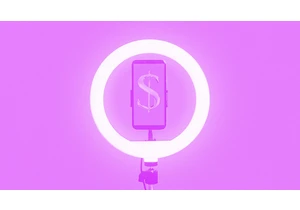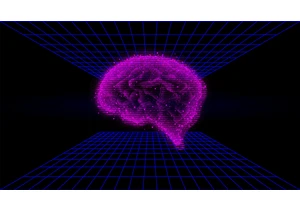One of the most frequent questions I’ve been getting from business execs lately is whether the AI pin will become the next great tech device. After all, with OpenAI recently finalizing its acquisition of Io Products, the AI hardware design firm led by legendary former Apple designer Jony Ive, it looks like we’ll soon see the next great interface: a voice-activated, lapel-pin-size AI device that’s a successor to the smartphone. And won’t it be a better, calmer form of technology, they ask me, freeing us from having to stare at a small screen in our hands?
No. In a world teeming with intelligent interfaces, the AI pin chooses to be dumb — not technically, but emotionally, socially, and spatially. The core failure of the AI pin genre isn’t technical, but conceptual.
But seemingly no one involved or interested in the form factor has stopped to ask: Is a chest pin even a good interface? Not questioning this is to ignore decades of interaction design: that good form emerges from use, from behavior, from affordance.
Here’s what I mean.
The Narrative Inertia and Unanswered Questions Behind the AI Pin
To begin with, there are a number of very real questions with this new form factor yet to be plausibly answered, including:
- Can you hear it in the wind or while in a crowd?
- Can others around you tell if it’s listening?
- What new social cues does it produce?
- How do you use it while walking, biking, cooking, parenting, holding a coffee, working in a noisy office, standing in line, or going on a date?
- What does it feel like to wear something that’s constantly watching, blinking, and projecting?
By all appearances, the AI pin concept wasn’t born out of ergonomic study, social anthropology, or material intuition. It was born out of narrative inertia — the idea that because voice agents exist, and because wearables exist, the next logical step is to wear a voice agent.
The Problem With “Invisible” Interfaces
Another driver of the AI pin’s narrative inertia is the concept of the “invisible interface”—the belief that our computing is best served through a device we don’t have to see, but that seamlessly responds to our stated wishes. This vision has a long history, starting with voice-based computers in science fiction (more on that below); its conceptual stickiness was further strengthened with the launch of Siri and other voice-activated assistants in the 2010s.
As a design goal, “invisibility” is best understood through a famous quote by Xerox PARC’s Mark Weiser (though it’s easy to misinterpret):
“A good tool is an invisible tool. . . . By invisible, we mean that the tool does not intrude on your consciousness; you focus on the task, not the tool.”
The second part of the quote tells all. It’s not about the device itself being invisible, but the act of usage rendering it invisible.
For instance, when we use a hammer, we focus on the nail, not the hammer. To a good woodworker, the very act of using the hammer renders it invisible.
In my experience across countless design and tech conferences, the notion of an “invisible” interface quickly becomes a very powerful semantic black hole. Once people start hearing the term, they can’t see anything other than it, and their minds (and design practices) auto-complete to it, instead of considering other formats such as physical buttons and other familiar technologies.
Invisible technologies lack the feedback that people need to develop a relationship with them. Your mind has to make up for the invisibility in other ways, adding a cognitive strain and microfriction to their usage. If you have voice-controlled lights in your house, for instance, you have to remember what you taught Alexa to call them—the “upstairs lights” or something else? Imagine having a conversation like this with an AI pin all day, across many topics!
If design is governance, making an interface invisible takes away agency and ensures that design choices are far removed from the people who use it.
Which takes us to the sci-fi culprit behind the AI pin.
Truthy Tech vs. Track Record
When product developers assume pins are a natural form factor for ambient computing, they must then reverse-engineer behavior, trust, and social rituals to support it. They think the form factor will look so cool that it will just work, and address none of the cultural aspects.
It’s yet another variation of what I call “truthy tech”: products or concepts that are exciting at first glance, usually because they resemble props from sci-fi TV shows and movies, but that quickly lose their luster when real-world considerations creep in.
In other words, the AI pin may seem inevitable because for decades, we’ve watched characters on the Star Trek series communicate with each other and the ship’s computer through the ComBadges on their uniforms. It’s easy to forget that the ComBadge is only designed to be visually exciting and help advance the show’s storyline, and not actually to be functional.
As a real-life consumer device, however, nearly a dozen pin-based devices have come and gone over the years without gaining mass adoption—from 2003’s SenseCam by Microsoft (promoted by famed tech pioneer Gordon Bell) to 2024’s Humane AI Pin, which imploded despite $240 million in funding.
Ive and the Search for a New Steve Jobs-Level Visionary
I should stress that none of this is meant as a criticism of Jonny Ive. He is an amazing supply chain innovator who thrived in Apple’s halcyon days. But his best work was always done alongside a genuine visionary. And it is very debatable if Sam Altman can ever fill Silicon Valley’s conspicuous Steve Jobs-shaped absence.
In any case, the likeliest form factor for a wearable AI device is one that already exists and has been integrated into our daily lives: the earbud-type AirPods. Rather than assume Altman can somehow completely transform culture enough that we will want to interact with artificial intelligence through a lapel pin, it makes far more sense to expect a future where the AI program is connected to our iPhones and AirPods.
And after all, Jony Ive helped develop those.
Autentifică-te pentru a adăuga comentarii
Alte posturi din acest grup


Yahoo’s bet on creator-led content appears to be paying off. Yahoo Creators, the media company’s publishing platform for creators, had its most lucrative month yet in June.
Launched in M

From being the face of memestock mania to going viral for inadvertently stapling the screens of brand-new video game consoles, GameStop is no stranger to infamy.
Last month, during the m

The technology industry has always adored its improbably audacious goals and their associated buzzwords. Meta CEO Mark Zuckerberg is among the most enamored. After all, the name “Meta” is the resi

Even as AI becomes a common workplace tool, its use in

Finding a job is hard right now. To cope, Gen Zers are documenting the reality of unemployment in 2025.
“You look sadder,” one TikTok po

